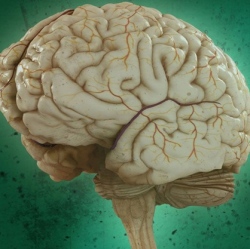
DARPA intends the four-year N3 effort to conclude with a demonstration of a bidirectional system being used in a defense-relevant task that could include human-machine interactions with unmanned aerial vehicles, active cyber defense systems, or other properly instrumented Department of Defense systems.
If successful, N3 technology could ultimately find application in these and other areas that would benefit from improved human-machine interaction, such as partnering humans with computer systems to keep pace with the anticipated speed and complexity of future military missions.
The envisioned N3 technology breaks through the limitations of existing technology by delivering an integrated device that does not require surgical implantation, but has the precision to read from and write to 16 independent channels within a 16mm3 volume of neural tissue within 50ms. Each channel is capable of specifically interacting with sub-millimeter regions of the brain with a spatial and temporal specificity that rivals existing invasive approaches. Individual devices can be combined to provide the ability to interface to multiple points in the brain at once.
To enable future non-invasive brain-machine interfaces, N3 researchers are working to develop solutions that address challenges such as the physics of scattering and weakening of signals as they pass through skin, skull, and brain tissue, as well as designing algorithms for decoding and encoding neural signals that are represented by other modalities such as light, acoustic, or electro-magnetic energy.
Openwater red light high resolution internal scanning and brain interface
Red light passes through flesh and bone but it scatters. A hologram can reform the scattered light into an image to see inside the body at high resolution.
Sound is used to focus the system. It changes the red light to orange and enables an orange light under a sensor to create a hologram. The sonic points are moved and rapidly scanned to form images.
This will also detect cancer at an early stage. This will save millions of lives.
Compact portable medical imaging will enable most of the developing world to also have access to medical imaging to improve medicine in poorer countries.
It can also be used for reading and writing to the brain and for non-invasive brain interfaces. There are 2 billion with brain diseases who can be helped with this technology
